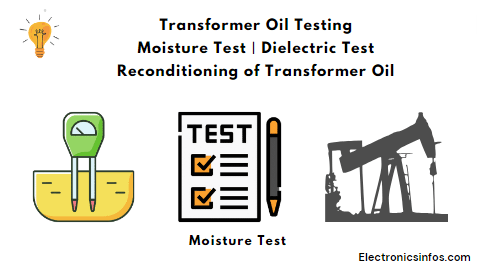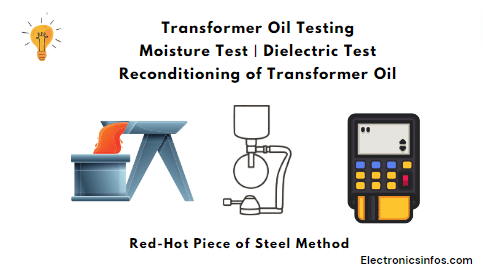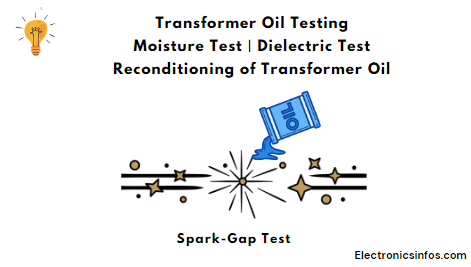why Transformer oil testing is important?
 |
| Reconditioning of Transformer Oil |
The dielectric properties of transformer oil are crucial for better insulation. Transformer oil testing helps to identify major faults and abnormalities in the early stages, Early detection enables proactive maintenance and reduces the risk of unexpected failures of electricity.
The dielectric properties of transformer oil are crucial for better insulation. This is essential for maintaining the transformer's performance and preventing breakdowns.
Continuous monitoring and maintenance of transformer oil can extend the operational life of transformers.
The purpose of transformer oil is to provide insulation between conductive components. It helps maintain a barrier that keeps electricity where it's supposed to be, preventing short circuits and ensuring efficient electrical performance.
Transformer oil also helps dissipate heat generated during the operation of the transformer. As electrical energy passes through the transformer, some of it is converted into heat. The oil absorbs this heat and carries it away, preventing the transformer from overheating.
In the time of a major fault, transformer oil helps suppress arcs (electrical discharges) that may occur. It plays a role in preventing and extinguishing arcs, reducing the risk of damage to the transformer.
To provide insulation we used mineral oil in the transformer that provides cooling and insulation.
Transformer Oil Testing
Transformer oil testing is performed at regular intervals to ensure the insulation strength of the oil, enhancing the reliability and efficiency of the transformer. During these tests, we assess the moisture content and dielectric strength of the oil.
If the moisture level reaches 1 part in 100,000, and the dielectric strength drops to 22,000 volts, it indicates a reduction in insulation compared to the standard levels.
When the insulation is compromised, the risk of a short circuit and flashover significantly increases. Regular testing helps identify such issues early on, allowing for corrective actions and preventing more serious problems that could impact the transformer's performance.
There are two Types of Tests in the transformer to check the insulation including
- Moisture Test
- Dielectric Test
Moisture Test
A moisture test is a type of test in which we find the moisture level of the transformer oil is called moisture test. This test is important to check the insulation properties of the oil and, consequently, the overall health of the transformer.
Moisture can degrade the dielectric strength of the oil, leading to potential electrical issues. By regularly testing for moisture content, we can identify early signs of degradation and take preventive measures to maintain the transformer's optimal performance.
Procedure of Moisture Test
A sample of the transformer oil is extracted from the transformer. Various methods are used to measure the moisture content in the oil. Common techniques include Karl Fischer titration, capacitance-based sensors, and hygroscopic sensors used to measure the moisture in the oil.
The adopted method is to measure the amount of water present in the oil, usually in parts per million (ppm) or percentage. after that, we can compare the result to the standard values.
Red-Hot Piece of Steel Method
This is the simple method that is used in a transformer in which a small sample of transformer oil is collected in a clean and dry container. A piece of steel is heated until it becomes red-hot. This can be done using a flame or another heat source. The red-hot steel is then dipped into the oil sample.
The reaction between the hot steel and the oil vaporizes water present in the oil. The presence of moisture may be indicated by steam or bubbling as the red-hot steel reacts with water in the oil. The hissing sound is also produced in the oil.
Limitation of Red -Hot piece Method
- Lack of Precision
- Safety Concerns
- Limited Reliability
Copper Sulphate Method
This is the most reliable method to check moisture. In this method, we used copper sulphate crystals When we heated copper sulphate crystals the colour changed to white.
we put this crystal into sample oil, if the colour of the crystal is changed to blue it means the oil contains moisture.
Spark-Gap Test
Spark-gap is also another reliable method to check the moisture in the oil. in this method, we use two balls of copper in the oil. the distance between the balls is 0.15 inches.
we hang these balls in the oil and provide a potential difference of 25000 volts. if an oil contains moisture the arc is produced in the oil across balls otherwise no arc is produced in the oil.
Dielectric Test
A dielectric test is used To test the Dielectric Strength of Transformer Oil. This test was conducted by a standard portable oil testing set. The size of This box is 60*100 mm2. There are two electrodes. the distance between both electrodes is 4mm.
In this method, we fill a sample oil in the box and provide a potential difference of 40kv to 1 minute. if oil tolerates this spark of 1 minute without producing an arc it means the dielectric strength is good. the standard voltage is 45kv to test the dielectric.
Drying of Silica Gel and There Moistening Test
Most of the transformers are used outdoors so there is always a possibility of winding insulation or Oil moisture. the dielectric strength is reduced due to the moisture in the oil so there is a possibility of flashover in the transformer. to minimize the moisture effect we used a silica gel in the transformer.
the dry silica gel colour is blue when it absorbs the maximum moisture its colour changes to pink.to recover the silica gel property we heat a silica gel at the temperature of 300F. the period is 6-8 hours for recovery.
Reconditioning of Transformer Oil
There are two methods of reconditioning oil that are described below.
- Filter Press Method
- Activated Alumina & Fuller Earth
Filter Press Method
This is the most reliable method to recondition the transformer oil, In this process, we pass out the oil in the oil filter press. To save time we pass out the oil from the centrifuge.
The centrifuge process filters heavy materials like carbon etc. filter consists of a helical gear pump, cast iron, paper sheets, oil strainer and pressure gauge. the working pressure of the filter press is 20 to 40 inches.
During the oil reconditioning, we pass out the oil into the filter and pour it into another tank. we must follow the pressure gauge to check the pressure if pressure increases it means the filter is not in good condition.
Activated Alumina & Fuller Earth
The Oil reconditioning process is also done with activated alumina and filler earth. there are two different methods the first method is better because this method removes the moisture.
To Recondition the oil with the method of activated alumina we put the alumina and silica gel into a special breather. after that, we rotate the oil at a specific pressure. the alumina required in the oil is following the method
Q= 0.412 * N * O
- Q = activated alumina quantity in pounds
- N= Nutrilization Number of oil
- O=Oil quantity in a gallon
Conclusion
Transformer oil testing plays an important role in the performance of transformer health. Through various tests conducted on transformer oil samples, valuable information is obtained regarding the presence of contaminants, insulation quality, moisture content, and overall operational status of the transformer.
Frequently Asked Questions – FAQs
What is transformer oil testing?
Why is transformer oil testing important?
- Identifying contaminants that may affect insulation performance.
- Monitoring oil degradation.
- Assessing dielectric strength and insulation resistance.
- Detecting internal faults and potential failures early.
- Supporting predictive maintenance and extending transformer lifespan.
What are the common tests conducted on transformer oil?
- Breakdown voltage test (Dielectric Strength Test).
- Dissolved gas analysis (DGA) for detecting internal faults.
- Moisture content analysis (Karl Fischer titration).
- Acidity test (Total Acid Number - TAN) for oil degradation.
- Interfacial tension (IFT) test for assessing oil purity.
- Power factor measurement for insulation condition.
What are the key parameters measured in transformer oil testing?
What are the typical acceptable limits for key parameters in transformer oil?
- Breakdown voltage: Above a specified threshold (e.g., 30 kV).
- Moisture content: Below a certain percentage (e.g., 50 ppm).
- Acidity (TAN): Within a defined range (e.g., 0.1 mg KOH/g).
What does dissolved gas analysis (DGA) reveal about transformer health?
3 Types of Electrical Transformers w.r.t Core





.png)
-Electronicsinfos.png)


0 Comments
please do not insert spam links